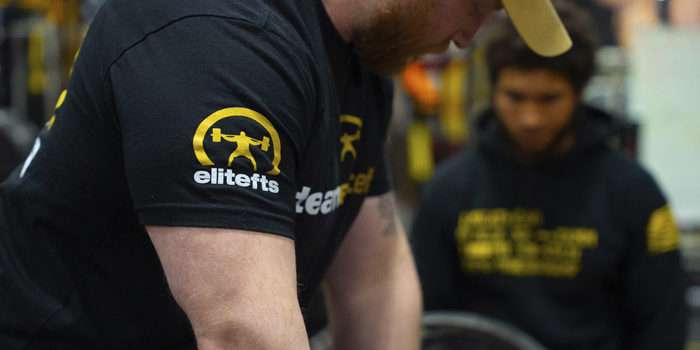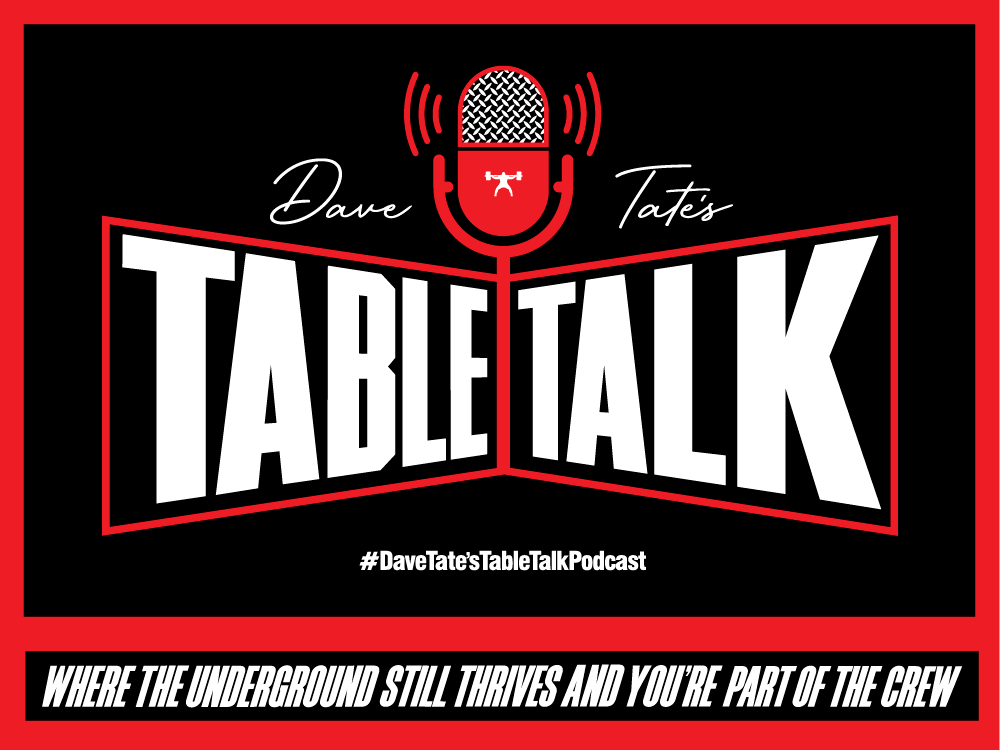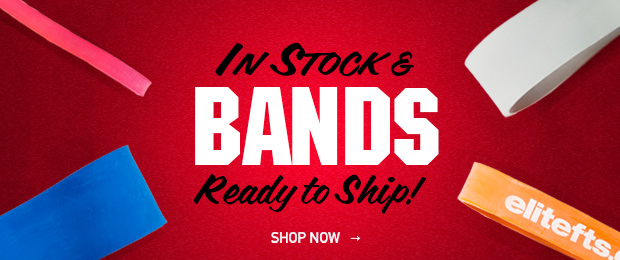
You have invested more into this hobby than you would like to admit. You are beat up and need more drive than you once had. Perhaps you have that fire in you, but your body is not responding. To you, it seems your best days are behind you, and the smart decision is to move on altogether. You may fear that you can not come back or worry about what other people will think when you have to start over.
I have been there, too. After taking second at The United States Strongman Nationals, I went overseas and competed in my first and only international strongman competition. I was very optimistic about the future. Unfortunately, I followed up in 2018 with a poor finish at Nationals in 2019, the pandemic canceled Nationals in 2020, and I had to pull out of 2021 Nationals due to an injury. The next thing I knew, three years were gone with little to show for it.
Considering how much time and energy it consumed, I wondered if continuing this journey made sense. Five years after my last podium at Nationals and my only international competition, I put together the best competitive season of my life. I won regionals and took third in both pro-am and Nationals. I also competed at Clash on the Coast and the Official Strongman Games.
If you have experienced an injury, a setback, repeated failure, or things seem bleak, do not give up just yet. Here is my four-step plan for making a comeback.
Step One
First, establish why you want to make this comeback. Is it for attention, external validation, or fame? I hate to break it to you, but those motivators will only carry you so far. Would you still want to do it if social media did not exist? Are you tying your self-worth to your performance? I have been guilty of this in the past.
It is excellent when you are winning but brutal when you are not. Winning solves problems on the surface, but deep down, it will not make real problems disappear.
Focus on Your Why
Instead, consider intrinsic motivation. This form of motivation includes self-mastery, being your best, setting a good example for others, challenging yourself, and personal development because quitting does not align with your values. Finding your why is essential. You will have to reflect on this when things get tough or you hit another setback, an obstacle, or a failure comes up. If your motivation is not right, you will fold.
I was starting to wonder if all this training and sacrifice was worth the effort anymore. I wondered if my time would be better spent pursuing other endeavors. However, deep down, I knew I had never reached my full potential, and I knew I would regret giving up on this journey. During this rough time, I remembered what it was like starting out in the sport, the days of being very mediocre at strongman, and how much I still loved it. Setting goals, working hard, and overcoming obstacles really helped teach me some valuable lessons and get my life in order. My drive shifted from I need to win for external validation to I want to learn, grow, and become the best version of myself. I want to use this experience to teach, motivate, help, and inspire others. It is a much more worthwhile and rewarding drive.
Step Two
Next, you have to commit and go all in on your goal. Make the sacrifices that you know are required. There may be some non-negotiables and tradeoffs you are not willing to take. That is up to you to decide, but once those are established, get to work. Just training harder was not going to be enough, so I came up with a game plan.
Commit to Your Goal
I had trained at a small gym where I was the only competitor for a very long time. After the poor finish at nationals, I moved to a bigger gym with other strength athletes, more equipment, and an abundance of resources. This created an environment where I had the appropriate support to reach the next level. At the time, I was also working as a personal trainer and as a high school strength coach. Unfortunately, there was no opportunity for growth at the school, and with the pandemic, my options seemed limited.
I decided to shift my business to incorporate coaching strongman competitors both at the new facility as well as remotely. I leveraged the skills I accumulated in sports performance as a strength and conditioning coach for the sport of strongman. This allowed me to continue learning, improve my skills, spend more time in the community, and improve my financial situation. In turn, I could allocate more time and energy to training. Although it may not be practical for everyone, there are some useful takeaways.
Auditing your current situation, constructing solutions, and taking action is more productive than harping on the problem. Figuring out a way to get into a positive and supportive environment, as well as allocating more time and energy to your goals, will also get you faster results. It's important to spend less time talking about your comeback, setting expectations, and convincing others. Instead, spend more time moving in the direction of your desired outcome.
Step Three
Give yourself permission to fail. If you are coming off an injury or taking time off, it will take a while to get back to your best and exceed previous results. Remember that you will not be at your best in your first competition back, but you have to get out there and try. You may be three competitions or 18 months away from a new personal best or placing. You may not feel confident at first, but you will after you take action. That will lead to the next step in the process.
Failure is a Part of Growth
To start off the 2022 season, I signed up for New York's Strongest Man to qualify for the national championships. This was an annual local competition that I had crushed in the past, but I was hesitant to commit to it at first. I was healthy enough to compete with no limitations, but my strength was not all the way back yet. I knew I would not be at my best, and it may be a humbling experience, but I decided being exposed to competition would be good for me in the long run.
It turned out better than expected, and I ended up qualifying for USS nationals later in the year. Although I was not a fan of the events for nationals, and I still did not think I was at my absolute strongest, I decided to sign up anyway. I went to New Hampshire and placed 16th out of 69 middleweights. It was a solid showing, but more importantly, it forced me to train my ass off. It was my first high-level show in three years, which was a big monkey off my back. This was a great year for growth and, most importantly, helped me build momentum. When getting back out there early on, forget about what other people will think. They do not know your back story, and deep down, they do not care. Hate never comes from people who are doing better than you anyway. Get over it and take risks!
Step Four
Lastly, bet on yourself. Not everyone is going to buy into your vision. Do your best to communicate with loved ones, but do not take it personally or do it if it motivates you. Stop trying to sell this to people and instead win through your actions. If you are worried about what other people may think, realize failure is not the worst thing. Slowly watching your dreams die and being so scared to try that you have to make excuses, alibis, or lie to yourself is!
After the USS nationals, I built confidence, substantial strength, and, most importantly, momentum. Traditionally, I liked to qualify for nationals early in the year, compete up a weight class, and then finish the year at nationals. By doing a reach competition, you expose yourself to better competition, and when nationals come around, it is low-stress and not a big deal comparatively.
Bet on Yourself
After qualifying for nationals in July, I decided to sign up for a pro-am, The Clash in Jersey, and ended up taking third. This qualified me for one of the premier 105kg shows in the world, Clash on the Coast, five weeks later. I had no choice but to go, and with little time to prepare, I did my best. Although I did not advance out of the preliminary rounds, I achieved a very competitive performance that I was proud of.
After Clash, I only had about ten weeks to prepare for USS nationals. I was thinking about passing on the contest, but I realized the only thing holding me back from competing would be my ego. I was worried about not having enough time to prepare and how it would look if I underperformed. So, I decided to go for it anyway because it had been a very important goal for me for a very long time. Regardless of how it played out, I figured I had learned and grown from the experience. I went to Dallas and took 3rd place out of 61 athletes, my first national podium in five years. I was ecstatic about the result, along with the fact that I decided to go for it, and it paid off. So, I planned on taking an offseason after nationals, but my training partner coaxed me into signing up for The Official Strongman Games (OSG) mid-Atlantic regional qualifier later that summer. OSG is the highest level show for weight class strongman in the world.
With six weeks of preparation, I decided to take a shot and head down to North Carolina to compete. I ended up winning regionals and earning an invite to <105kg World's Strongest Man. Each step along the way built confidence, I took risks, and I bet on my vision. What made the year so rewarding was all the hardships, pain, and suffering from the three years leading up to this. I learned so much, and it forced me to grow as an athlete and, more importantly, as a person.
Conclusion
Strength sports are very demanding and can take up a lot of your time and energy. The longer you compete, the harder it becomes to justify continuing when major setbacks occur. If you have experienced setbacks but are not ready to move on from competing, do not give up just yet. First, make sure your motive to come back is noble, and it is truly important to you. Next, commit to your goal and make the tradeoffs required to succeed. Allow yourself to fail in the process because failure leads to learning and growth. Lastly, bet on yourself. Big risks lead to big rewards. There is more fame, money, and attention in strength sports than ever before. The truth is most serious athletes do not compete for those reasons. If walking away just does not sit right with you, if the idea of your last PR being in the rearview mirror, or if you feel unsatisfied with where you are currently, then get back to work.
Bio
Matt Cooney started Cooney Strength and Conditioning LLC in 2015 and currently coaches at The Pit in Eatontown, NJ. He was the head strength and conditioning coach for the Holmdel High School athletic program from 2017 to 2021. Matt has completed strength and conditioning internships at West Chester University, Seton Hall University, Monmouth University, and Rutgers University. He completed his bachelor's in exercise science and minored in nutrition and dietetics from West Chester University in 2014. He holds CSCS credentials from the NSCA, the USAW level 1 sports performance certification, and is an ISSA certified personal trainer. Matt has competed in over 30 strongman competitions since 2013. He's placed 6th in 2017, 2nd in 2018, and 3rd in 2023 at the United States Strongman National Championships in the 220 pound class. He has also competed at the 2023 Clash on The Coast Pro Series, took 22nd at The Official Strongman Games <105kg WSM, and took 3rd as a member of Team USA at the Ultimate Strongman 105kg 2018 Worlds Strongest Nation in Melitople, Ukraine.











